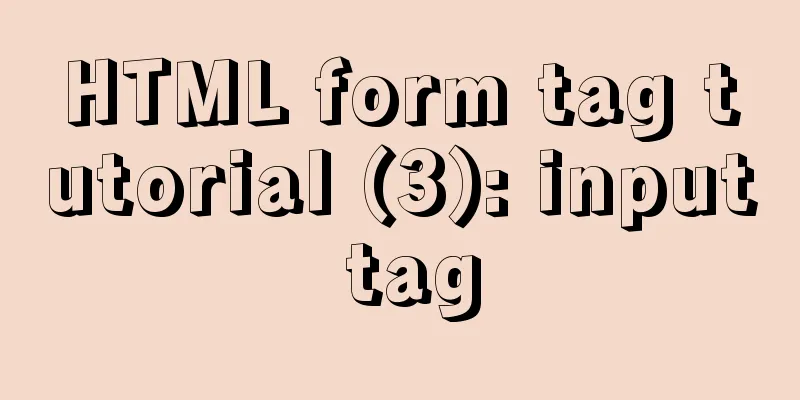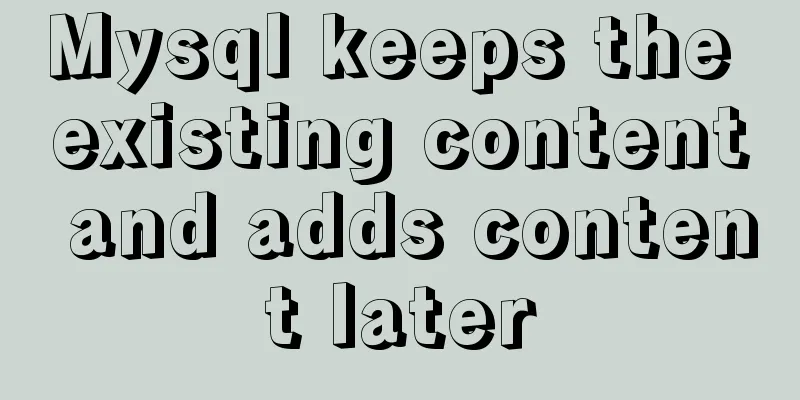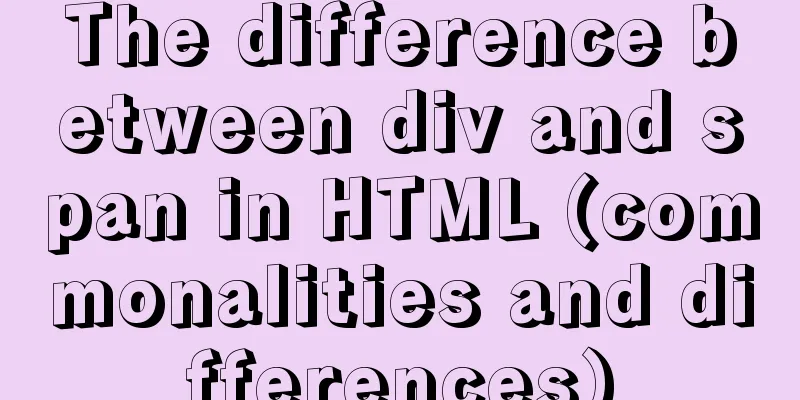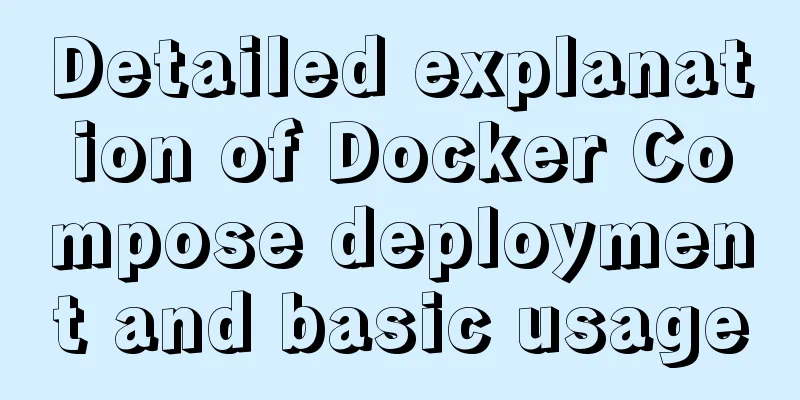HTTP header information interpretation and analysis (detailed summary)
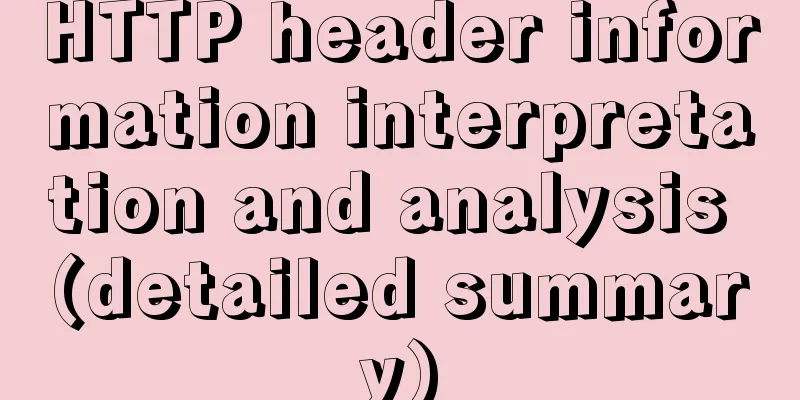
|
HTTP Header Explanation 1. Accept: Tells the web server what media type it accepts. */* means any type, and type/* means all subtypes of this type, type/sub-type. 2. Accept-Charset: The browser declares the character set it accepts Accept-Encoding: The browser declares the encoding method it accepts, usually specifying the compression method, whether compression is supported, and what compression method is supported (gzip, deflate) Accept-Language: The browser declares the language it accepts. The difference between language and character set: Chinese is a language, and there are many character sets for Chinese, such as big5, gb2312, gbk, etc. 3. Accept-Ranges: The web server indicates whether it accepts requests to obtain part of one of its entities (such as part of a file). bytes: indicates acceptance, none: indicates rejection. 4. Age: When a proxy server responds to a request with an entity from its own cache, this header indicates how long it has been since the entity was created. 5. Authorization: When the client receives a WWW-Authenticate response from a WEB server, this header responds with its own authentication information to the WEB server. 6. Cache-Control: Request: no-cache (Do not cache the entity, request to get it from the WEB server now) max-age: (Only accept objects whose Age value is less than max-age value and have not expired) max-stale: (Past objects can be accepted, but the expiration time must be less than max-stale value) min-fresh: (accept cache objects whose freshness lifetime is greater than the sum of their current age and min-fresh value) Response: public (can respond to any user with cached content) private (cached content can only be used to respond to the user who previously requested the content) no-cache (can be cached, but can only be returned to the client after verifying its validity with the WEB server) max-age: (the expiration time of the object contained in this response) ALL: no-store (no caching allowed) 7. Connection: Request: close (tell the web server or proxy server to disconnect after completing the response to this request and not wait for subsequent requests from this connection). keepalive (tells the web server or proxy server to maintain the connection after completing the response to the current request and wait for subsequent requests from this connection). Response: close (the connection has been closed). keepalive (the connection is maintained, waiting for subsequent requests for this connection). Keep-Alive: If the browser requests to maintain the connection, this header indicates how long (in seconds) you want the WEB server to maintain the connection. For example: Keep-Alive: 300 8. Content-Encoding: The web server indicates what compression method (gzip, deflate) it uses to compress the objects in the response. For example: Content-Encoding: gzip Content-Language: The web server tells the browser the language of the object it responds to. Content-Length: The WEB server tells the browser the length of the object it responds to. For example: Content-Length: 26012 Content-Range: The web server indicates which part of the entire object the partial object contained in the response belongs to. For example: Content-Range: bytes 21010-47021/47022 Content-Type: The WEB server tells the browser the type of object it responds to. For example: Content-Type: application/xml 9. ETag: It is the mark value of an object (such as a URL). For an object, such as an HTML file, If it is modified, its Etag will also be modified. Therefore, the role of ETag is similar to that of Last-Modified, which is mainly used by the WEB server to determine whether an object has been changed. For example, when you requested an HTML file last time, you got its ETag. When you request the file again this time, The browser will send the previously obtained ETag value to the WEB server, and then the WEB server will compare this ETag with the current ETag of the file, and then know whether the file has changed. 10. Expired: The web server indicates when the entity will expire. An expired object can only be used to respond to client requests after its validity has been verified with the web server. It is the HTTP/1.0 header. For example: Expires: Sat, 23 May 2009 10:02:12 GMT 11. Host: The client specifies the domain name/IP address and port number of the WEB server that it wants to access. For example: Host: rss.sina.com.cn 12. If-Match: If the object's ETag has not changed, it actually means that the object has not changed, and the requested action is performed. If-None-Match: If the ETag of the object changes, it actually means that the object has also changed, and the requested action is performed. 13. If-Modified-Since: If the requested object has been modified after the time specified in this header, the requested action is performed (such as returning the object). Otherwise, the code 304 is returned to tell the browser that the object has not been modified. For example: If-Modified-Since: Thu, 10 Apr 2008 09:14:42 GMT If-Unmodified-Since: The requested action (such as returning the object) is performed only if the requested object has not been modified since the time specified in this header. 14. If-Range: The browser tells the WEB server, if the object I requested has not changed, give me the missing part, if the object has changed, give me the entire object. The browser sends a request object ETag or the last modification time known to you is given to the WEB server to let it determine whether the object has changed. Always used with the Range header. 15. Last-Modified: The last modification time of the object considered by the WEB server, such as the last modification time of a file. The last time the dynamic page was generated, etc. For example: Last-Modified: Tue, 06 May 2008 02:42:43 GMT 16. Location: The web server tells the browser that the object it is trying to access has been moved to another location. Go to the location specified by the head to get it. For example: Location: upload/2022/web/sinahome_0803_ws_005_text_0.gif 17. Pramga: Mainly uses Pramga: no-cache, which is equivalent to Cache-Control: no-cache. For example: Pragma: no-cache 18. Proxy-Authenticate: The proxy server responds to the browser, asking it to provide proxy authentication information. Proxy-Authorization: The browser responds to the proxy server's authentication request and provides its own identity information. 19. Range: The browser (such as Flashget multi-threaded download) tells the WEB server which part of the object it wants to retrieve. For example: Range: bytes=1173546- 20. Referer: The browser tells the WEB server from which web page/URL it obtained/clicked the URL/URL in the current request. For example: Referer: http://www.sina.com/ 21. Server: The WEB server indicates its software and version information. For example: Server: Apache/2.0.61 (Unix) 22. User-Agent: The browser identifies itself (what kind of browser it is). For example: User-Agent: Mozilla/5.0 (Windows; U; Windows NT 5.1; zh-CN; rv:1.8.1.14) Gecko/20080404 Firefox/2.0.0.14 23. Transfer-Encoding: The web server indicates that it is responsible for the body of the response (not the objects in the body). What encoding was done, such as whether it was chunked. For example: Transfer-Encoding: chunked 24. Vary: The WEB server uses the content of this header to tell the cache server under what conditions the object returned by this response can be used to respond to subsequent requests. If the source web server receives the first request message, the header of its response message is: Content-Encoding: gzip; Vary: Content-Encoding Then the Cache server will analyze the header of the subsequent request message and check whether its Accept-Encoding is consistent with the Vary header value of the previous response, that is, whether the same content encoding method is used. This can prevent the Cache server from using its own The compressed entity in the cache is responded to by browsers that do not have the decompression capability. For example: Vary: Accept-Encoding 25. Via: List the proxy servers that the response from the client to the OCS or vice versa passes through, and what protocols (and versions) they use to send the request. When the client request reaches the first proxy server, the server will add a Via header to the request it sends and fill in its own relevant information. When the next proxy server receives the request from the first proxy server, it will copy the Via header of the previous proxy server's request in its own request. header, and add its own relevant information to the end. Similarly, when OCS receives a request from the last proxy server, it checks the Via header and knows the route the request has taken. For example: Via: 1.0 236-81.D07071953.sina.com.cn:80 (squid/2.6.STABLE13) ==================================== HTTP request message header example: Host: rss.sina.com.cn User-Agent: Mozilla/5.0 (Windows; U; Windows NT 5.1; zh-CN; rv:1.8.1.14) Gecko/20080404 Firefox/2.0.0.14 Accept: text/xml,application/xml,application/xhtml+xml,text/html;q=0.9,text/plain;q=0.8,image/png,*/*;q=0.5 Accept-Language: zh-cn,zh;q=0.5 Accept-Encoding: gzip, deflate Accept-Charset: gb2312,utf-8;q=0.7,*;q=0.7 Keep-Alive: 300 Connection: keep-alive Cookie: userId=C5bYpXrimdmsiQmsBPnE1Vn8ZQmdWSm3WRlEB3vRwTnRtW <-- Cookie If-Modified-Since: Sun, 01 Jun 2008 12:05:30 GMT Cache-Control: max-age=0 HTTP response message header example: Status: OK - 200 <-- Response status code, indicating the result of the web server processing. Date: Sun, 01 Jun 2008 12:35:47 GMT Server: Apache/2.0.61 (Unix) Last-Modified: Sun, 01 Jun 2008 12:35:30 GMT Accept-Ranges: bytes Content-Length: 18616 Cache-Control: max-age=120 Expires:Sun, 01 Jun 2008 12:37:47 GMT Content-Type: application/xml Age: 2 X-Cache: HIT from 236-41.D07071951.sina.com.cn <-- HTTP header used by the reverse proxy server Via: 1.0 236-41.D07071951.sina.com.cn:80 (squid/2.6.STABLE13) Connection:close ===================================== A brief description of HTTP header information 1. HTTP response code The response code consists of three decimal digits, which appear in the first line of the response sent by the HTTP server. There are five types of response codes, indicated by their first digit: 1xx: Information, request received, continue processing 2xx: Success, the behavior was successfully accepted, understood, and adopted 3xx: Redirection, further actions must be performed to complete the request 4xx: Client error, the request contains a syntax error or the request cannot be implemented 5xx: Server error, the server cannot implement an obviously invalid request. The following table shows each response code and its meaning: : : : : : : : : : : : : : : : : : : : : : : : : : : : : : : : : : : : : : : : : : : : : : : : : : : : : : : : : : : : : : : : : : : : : : : : : : : : : : : : : : : : : : : : : : : : : : : : : : : : : : : : : : : : : : : : : : : : : : : : : : : : : : : : : : : : : : : : : : : : : : : : : : : : : : : : : : : : : : : : : : : : : : : : : : : : : : : : : : : : : : : : : : : : : : : : : : : : : : : : : : : : : : : : : : : : : : : : : : : : : : : : : : : : : : : : : : : : : : : : : : : : : : : : : : : : : : : : 2. HTTP header The header consists of a key/value pair. They describe the properties of the client or server, the resources being transferred, and how the connection should be implemented. There are four different types of headers: 1. General header: It can be used for both requests and responses and is associated with the transaction as a whole rather than a specific resource. 2. Request header: allows the client to pass information about itself and the desired response form. 3. Response header: The response from the server to convey its own information. 4. Entity header: defines the information of the resource being transmitted. It can be used for both requests and responses. Header format: <name>:<value><CRLF> The following table describes the headers used in HTTP/1.1. Accept defines the media types that the client can handle, in order of priority; multiple types can be defined and wildcards can be used in a comma-separated list. For example: Accept: image/jpeg,image/png,*/*Accept-Charset defines the character sets that the client can handle, sorted by priority; multiple types can be defined and wildcards can be used in a comma-separated list. For example: Accept-Charset: iso-8859-1,*,utf-8 Accept-Encoding defines the encoding mechanisms that the client can understand. For example: Accept-Encoding:gzip,compress Accept-Language defines the list of natural languages that the client is happy to accept. For example: Accept-Language: en,de Accept-Ranges A response header that allows a server to indicate that it will accept requests for resource components at a given offset and length. The value of this header is understood as a unit of measure for the request range. For example, Accept-Ranges: bytes or Accept-Ranges: none Age allows the server to specify the length of time, in seconds, that has elapsed since the server generated this response. This header is mainly used for caching responses. For example: Age: 30 Allow A response header that defines a list of HTTP methods supported by the secondary origin in the request URI. For example: Allow: GET,PUT A UTHORIZATION response header that defines the authorization (realm and encoded user ID and password) required to access a resource. For example: Authorization: Basic YXV0aG9yOnBoaWw= Cache-Control A general header used to define caching instructions. For example: Cache-Control: max-age=30 Connection A general header used to indicate whether to save the socket connection as open. For example: Connection: close or Connection: keep-alive Content-Base An entity-header that defines the base URI for resolving relative URLs within the entity scope. If no Content-Base header is defined, resolve relative URLs, use the Content-Location URI (if it exists and is absolute) or use the request URI. For example: Content-Base: Content-Encoding A media type modifier that indicates how an entity is encoded. For example: Content-Encoding: zipContent-Language is used to specify the natural language type of the data in the input stream. For example: Content-Language: en Content-Length specifies the byte length of the data contained in the request or response. For example: Content-Length:382 Content-Location specifies the resource location (URI) contained in the request or response. If it is a must. For URLs it also serves as the starting point for relative URLs of resolved entities. For example: Content-Location: http://www.myweb.com/news Content-MD5 An MD5 digest of the entity, used as a checksum. Both the sender and the receiver calculate the MD5 digest, and the receiver compares the value it calculates with the value passed in this header. For example: Content-MD5: <base64 of 128 MD5 digest> Content-Range is sent with part of the entity; it indicates the low-order and high-order byte offsets of the inserted bytes, and also indicates the total length of this entity. For example: Content-Range: 1001-2000/5000 Contern-Type indicates the MIME type of the entity being sent or received. For example: Content-Type: text/html Date The date when the HTTP message was sent. For example: Date: Mon,10PR 18:42:51 GMT ETag An entity header that assigns a unique identifier to the resource being sent. For resources that can be requested using multiple URLs, ETag can be used to determine whether the resource actually sent is the same resource. For example: ETag: '208f-419e-30f8dc99' Expires Specifies the expiration date of the entity. For example: Expires: Mon,05 Dec 2008 12:00:00 GMT Form A request header giving the email address of the human user controlling the user agent. For example: From: [email protected] Host The host name of the requested resource. This field is mandatory for requests using HTTP/1.1. For example: Host: www.myweb.com If-Modified-Since If included with a GET request, causes the request to be conditionally dependent on the resource's last-modified date. If this header is present, and the resource has been modified since the specified date, a 304 response code SHOULD be returned. For example: If-Modified-Since: Mon,10PR 18:42:51 GMT If-Match Specifies one or more entity tags if included in a request. Only send resources whose ETag matches a tag in the list. For example: If-Match: '208f-419e-308dc99' If-None-Match If included in a request, specifies one or more entity tags. The operation is performed only if the resource's ETag does not match any of the conditions in the list. For example: If-None-Match: '208f-419e-308dc99' If-Range specifies an entity tag for a resource for which the client already has a copy. Must be used with the Range header. If the entity has not been modified since it was last retrieved by the client, the server sends only the specified range; otherwise it sends the entire resource. For example: Range: byte=0-499<CRLF> If-Range:'208f-419e-30f8dc99' If-Unmodified-Since Return the requested entity only if it has not been modified since the specified date. For example: If-Unmodified-Since:Mon,10PR 18:42:51 GMT Last-Modified specifies the date and time when the requested resource was last modified. For example: Last-Modified: Mon,10PR 18:42:51 GMT Location For a resource that has moved, used to redirect the requester to another location. Used with status code 302 (Moved Temporarily) or 301 (Moved Permanently). For example: Location: http://www2.myweb.com/index.jsp Max-Forwards A request header used with the TRACE method to specify the maximum number of proxies or gateways through which the request may be routed. A proxy or gateway should decrement this number before passing the request through. For example: Max-Forwards: 3 Pragma A general header that sends implementation-dependent information. For example: Pragma: no-cache Proxy-Authenticate is similar to WWW-Authenticate, except that it intentionally requests authentication only from the next server in the request chain (the proxy). For example: Proxy-Authenticate: Basic realm-admin Proxy-Proxy-Authorization is similar to authorization, but is not intended to be passed anywhere further than just down the immediate server chain. For example: Proxy-Proxy-Authorization: Basic YXV0aG9yOnBoaWw= The Public list shows the set of methods supported by the server. For example: Public: OPTIONS,MGET,MHEAD,GET,HEAD Range specifies a unit of measurement and an offset range for a portion of the requested resource. For example: Range: bytes=206-5513 Refener A request header field that identifies the original resource that generated the request. For an HTML form, this contains the address of the Web page that contains the form. For example: Refener: http://www.myweb.com/news/search.html Retry-After A response header field sent by the server with status code 503 (Service Unable to Provide) to indicate how long to wait before requesting again. This time can be either a date or a unit of seconds. For example: Retry-After: 18 Server A header that identifies the Web server software and its version number. For example: Server: Apache/2.0.46(Win32) Transfer-Encoding A general header that indicates the type of transformation to be performed on the message body in the opposite direction to that performed by the recipient. For example: Transfer-Encoding: chunked Upgrade allows the server to specify a new protocol or a new protocol version, used in conjunction with the response code 101 (Switch Protocol). For example: Upgrade: HTTP/2.0 User-Agent defines the type of software used to make the request (typically a web browser). For example: User-Agent: Mozilla/4.0(compatible; MSIE 5.5; Windows NT; DigExt) Vary A response header used to indicate that the response entity should be selected from among the available response representations using server-driven negotiation. For example: Vary: *Via A generic header containing all intermediate hosts and protocols used to fulfill the request. For example: Via: 1.0 fred.com, 1.1 wilma.com Warning is a response header used to provide additional information about the response status. For example: Warning: 99 www.myweb.com Piano needs tuning www-Authenticate A response header that prompts the user agent to provide a username and password, used with status code 401 (Unauthorized). Responds with an Authorization header. For example: www-Authenticate: Basic realm=zxm.mgmt |
<<: Solutions to the failure and invalidity of opening nginx.pid
>>: A brief discussion on the role of HTML empty links
Recommend
Detailed explanation of native Javascript inheritance methods and their advantages and disadvantages
Table of contents Preface Prototypal inheritance ...
Detailed explanation of JavaScript's built-in Date object
Table of contents Date Object Creating a Date Obj...
Create a virtual machine and install the Redhat Linux operating system on VMware (graphic tutorial)
How to create a virtual machine on VMware and ins...
Vue-cli framework implements timer application
Technical Background This application uses the vu...
MySQL 8.0.17 winx64 (with navicat) manual configuration version installation tutorial diagram
1. Download address: mysql-8.0.17-winx64 Download...
How to understand semantic HTML structure
I believe everyone knows HTML and CSS, knows the ...
Interviewer asked how to achieve a fixed aspect ratio in CSS
You may not have had any relevant needs for this ...
The pitfall of MySQL numeric type auto-increment
When designing table structures, numeric types ar...
Tutorial on building an FTP server in Ubuntu 16.04
Ubuntu 16.04 builds FTP server Install ftp Instal...
jQuery realizes the picture following effect
This article shares the specific code of jQuery t...
React uses routing to redirect to the login interface
In the previous article, after configuring the we...
Using vue3 to imitate the side message prompt effect of Apple system
Table of contents Animation Preview Other UI Libr...
A complete example of implementing a timed crawler with Nodejs
Table of contents Cause of the incident Use Node ...
Introduction to the use of HTML element noscript
noscript definition and usage The noscript elemen...
Pure JavaScript to implement the number guessing game
Develop a number guessing game that randomly sele...
